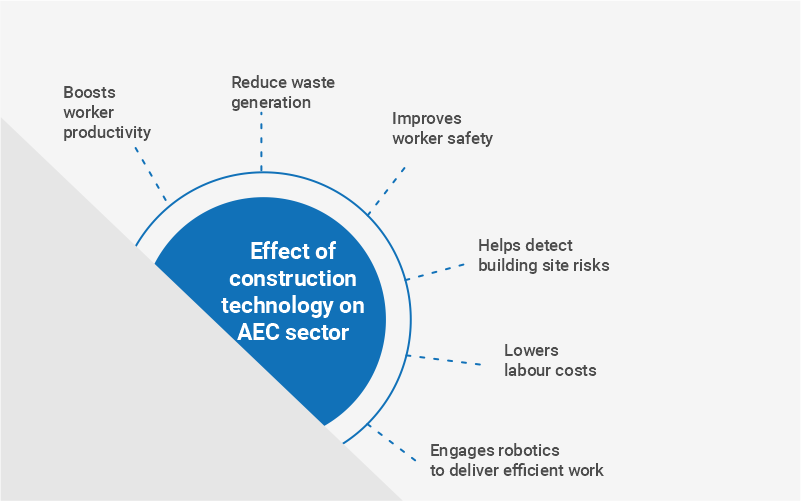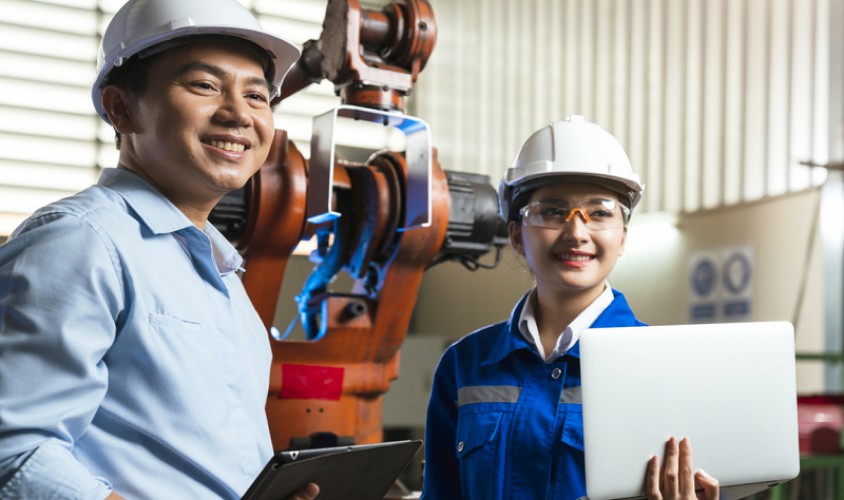New technological developments help us live better lives by making daily tasks easier. The new wave of technology is having a significant impact on the building industry. Businesses and individuals are working much more successfully and efficiently than ever before thanks to advancements in construction technology, which range from employing software to rapidly access important documents to deploying autonomous equipment to carry out excavation on the job site.
What is construction technology?
Construction technology refers to the state-of-the-art gear used in the building phase of a project, including automated and semi-automated construction equipment. It also includes modifications, software, and other devices. Construction technology is used for a wide range of jobs, from little residential houses to big industrial enterprises.The use of increasingly prefabricated components, computer-aided building design, and the creation of environmentally friendly structures utilising green technology are recent advancements in construction processes.
The development of the industry involves many different professions, from the first concept to the actual construction. Some of the important occupations associated with construction technology are construction managers, project managers, building inspectors, cost estimators, architects, civil engineers, and skilled labourers such as plumbers, bricklayers, and carpenters. However, a lot of these occupations require schooling. Degree programmes in construction technology are offered by numerous schools all over the world in areas like construction management, engineering, and architecture. Workers with skill can learn their trade at trade schools.
Every year, new technological advancements benefit the construction industry and make it possible to build bigger, stronger structures. Thought to be futuristic innovations, mobile apps, drones, and virtual reality technologies are already pervasive on construction sites all over the world. Investments in the industry have demonstrated that the future of construction technology is bright. Here are some examples of how construction technology enhances the AECO
domain’s functionality.

Productivity
One strategy used by construction businesses to boost efficiency is off-site construction. Construction projects with standardised layouts, such apartment buildings, hospitals, and educational institutions, are the main applications for this technique. Offsite construction encourages an environment analogous to a production facility, which reduces waste and increases worker productivity.
Off-site constructions come in two different varieties: modular and prefabricated. Workers build entire rooms with all of the necessary appliances offshore before the component is transported, installed, and attached to the building. Prefabrication is similar to modular construction in that pieces are built off the project site in a similar manner, but the parts frequently consist of portions rather than complete rooms, such as frames, wall panels, and floor systems.
Safety Training
Technologies in the construction sector are also changing the sector by improving safety and training. New technologies like virtual reality and augmented reality are assisting in improving safety by allowing workers in the construction sector to practise being in some potentially hazardous scenarios, such as operating cranes and other heavy machinery or doing welding work.
Wearables are also being used to improve worker safety by monitoring their movements and assisting in the detection of building site risks. E-textiles can measure vital information about employees like pulse rate and skin temperature, and safety managers can use geofencing to establish restricted areas that alert employees when they reach unsafe areas. . Supervisors and employees will be able to forecast and help prevent accidents with the help of these devices.
Labour Shortages
Construction technology is allowing businesses to do more with less resources by lowering labour costs through the use of robotics, machine learning, and autonomous heavy equipment. This is possible due to the present shortage of skilled people in the industry. Robots are good at simple repetitive tasks like tying rebar and laying bricks, and because they don’t need breaks or sleep to perform at their best, they might do the job faster.
The same holds true for machine intelligence. Sensors, GPS, and geo-fencing enable autonomous equipment to carry out continuous excavation and grading work throughout the day without the need for an operator.
About Author
Olivia Jones
Technology Specialist
Olivia is a highly skilled and experienced Technology Specialist with 10+ years of hands-on expertise in the rapidly evolving field of technology. She has a proven track record of successfully implementing and managing a wide range of technological solutions, ensuring optimal performance and efficiency. Olivia possesses a deep understanding of industry trends and emerging technologies, enabling her to provide strategic guidance and drive innovation within organizations. With a strong focus on problem-solving, she consistently delivers tailored solutions that align with business objectives while maximizing productivity and cost-effectiveness.
About SoftTech Engineers
A leading IT company (www.softtech-engr.com) facilitating business and technology transformation across the AECO industry through innovative software products and solutions. Equipped with 25+ years of deep domain expertise and industry knowledge, SoftTech has helped more than 4500 clients & government organizations, with more than 25000 users in India and around the world to gain a competitive edge and lead from the front in the industry.

